by W.S. Cranshaw* (1/19)
Quick Facts…
- Billbugs and white grubs are insects that damage turf grasses by feeding on the roots.
- Heavy infestations of white grubs may kill grass or attract mammals, such as skunks, that damage grass when digging to feed on grubs.
- White grubs are best controlled with insecticides when eggs are beginning to hatch.
- Billbugs are best controlled when adults are present on the surface of the lawn in spring.
- Insect parasitic nematodes are a biological control option for both white grubs and billbugs.
- Lawns that are adequately watered and in good condition can often tolerate much of the injury caused by these insects.
White grubs and billbugs can be important pests of turfgrass in parts of Colorado. Both groups of insects feed below ground and damage roots or feed within the growing crown area of the plant.
White Grubs
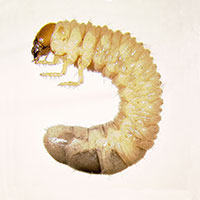
Figure 1a: White grub. Photo by David Shetlar, The Ohio State University. |
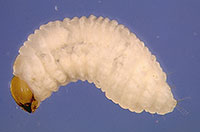
Figure 1b: Billbug larva. Photo by David Shetlar, The Ohio State University. |
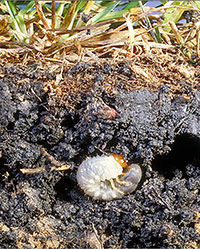
Figure 2: White grub in root zone of a lawn. Photo by David Shetlar, The Ohio State University. |
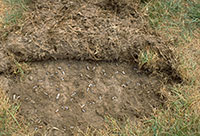
Figure 3: Damaged sod pulled back to expose white grub larvae. Photo by David Shetlar, The Ohio State University. |
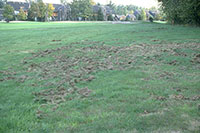
Figure 4: Damage to turfgrass caused by skunks or raccoons digging for white grubs. Photo by David Shetlar, The Ohio State University. |
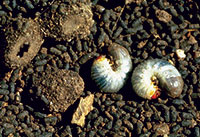
Figure 5: Most white grubs in Colorado do not damage plantss. These are larvae of the bumble flower beetle, which develop in compost and animal manure. |

Figure 6: Life stages of a masked chafer. From left to right: eggs, 1st stage grub, 2nd stage grub, 3rd stage grub, pupa, adult. Photo by David Shetlar, The Ohio State University. |
White grubs feed on the roots of grasses and usually can be found within the top couple inches of soil. The body is creamy white with a reddish-brown head and they have three pairs of legs on the thorax. Normally they will be seen to curve their bodies into a distinctive C-shape and grubs of the larger Colorado species may reach nearly 1 inch long.
White grubs are the most damaging insects in that occur in Colorado, and native species have long been particularly common in the TriRivers counties and in towns along the Arkansas and South Platte River valleys. Injury to plants occurs as the white grubs feed on roots, which causes drought stress due to the root loss. In severe infestations turf roots are so severely pruned that areas of the lawn can be lifted or peeled back easily, as if it had been newly laid sod. Lawn areas can be killed by these injuries. The presence of white grubs in lawns is also attractive to raccoons and skunks, which will dig up lawns in searching of grubs, often causing more damage than produced by the insects alone.
Adult stages of white grubs are known as scarab beetles (Coleoptera: Scarabaeidae). Common names for some of the specific types of white grubs include May or June beetles, chafers and dung beetles. Only a very few species damage turfgrass or other plants and most white grubs feed on decaying plant material and animal manure, providing a very helpful role in helping to recycle the nutrients of these materials. For example, a commonly encountered scarab beetle is Euphoria inda, known as the bumble flower beetle, which is often found developing in compost. These scavenger species are not damaging to lawns and only under unusual conditions ever feed on live roots of plants. However, a few species do feed on plant roots, particularly of grasses, and discussion of these follows.
Southwestern masked chafer (Cyclocephala hirta)
These are the white grubs that most often damage turf in communities along the Arkansas Valley, South Platte and West Slope areas. They are a type of annual white grub, which requires one year to complete a life cycle (Figure 7). Flights of egg-laying adult beetles occur in June and continue for about one and a half months.
Larvae feed on grass roots through summer and early fall. Peak injury occurs in late summer and early fall but some feeding occurs in spring when larvae return to feed on roots as they complete development. On drought-stressed turf, populations of nine or more grubs per square foot can produce visible injury. Higher grub populations can be tolerated on more vigorously growing turfgrass. Some grub feeding occurs in spring, but favorable growing conditions in spring usually allow grass to outgrow visible damage during that time. When soils cool in autumn and approach 60oF white grubs move more deeply into the soil where they remain in a dormant condition until soils warm in spring.
May and June beetles (Phyllophaga spp., Polyphylla spp.)
These are the largest of the white grubs and damage by them is restricted to Eastern Colorado. Most injury by these insects occurs along the Eastern Plains, particularly in the southeast area of the state.
Most May and June beetles have a three-year life cycle (Figure 10). Adult beetles emerge during May and June and lay eggs in the soil. Grubs feed during the summer and move deep in the soil to overwinter. Grubs return to the root zone and feed throughout the following summer. May and June beetle grubs cause most injury during this second season of their life cycle. During spring and early summer of the next year, the grubs complete development, cease feeding, and turn into pupae and adults that remain inactive in the soil. Adult beetles emerge next season. Because of their large size, lawn injury by May or June beetle grubs can occur from populations of five or fewer grubs per square foot.
Although roots of grasses are the primary food used by larvae of May/June beetles, they will sometimes feed on roots of trees and shrubs. This habit is particularly true for the very large grubs of the genus Polyphylla, whose best known representative is the tenlined June beetle (Polyphylla decemlineata).
Japanese Beetle (Popillia japonica)
The Japanese beetle is a new arrival to Colorado and presently (2018) found in several areas of the Front Range, including most of the Denver Metro area, Boulder and Pueblo. Unlike other white grub species present in the state, Japanese beetle is also important as a pest in the adult stage, which chew on leaves and flowers of a great many garden plants. Control of damage by the adult stage of this insect is covered in more detail in Extension Fact Sheet 5.601, Japanese Beetle.
Japanese beetles begin to lay eggs in mid to late June. Egg laying is largely concluded by late July although some continues through late summer. Peak damage to turfgrass occurs in late summer. Larvae that feed on lawns in spring do little injury and the actively growing plants at this time of year are well able to recover from root feeding grubs.
Identifying different types of white grubs.
All of the different kinds of white grubs found in lawns have a generally similar appearance. However, on close examination they can be distinguished by looking at the pattern of hairs and folds on the hind end of the abdomen. This is known as the rastral pattern. A comparison of the rastral patterns of a masked chafer, May/June beetle, and the Japanese beetle are illustrated in Figure 12.
White Grub Control
Cultural Controls.
How lawns are managed can affect the damage done by white grubs. Lawns that are mowed at higher levels produce plants with larger root systems, which are better able to tolerate root pruning injuries.
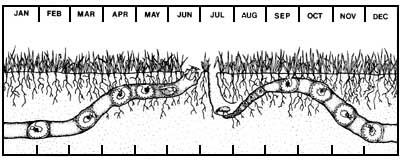
Figure 7: Life history of the masked chafer. |
Watering practices can have variable effects. Irrigation that promotes deep root growth can allow lawns to better tolerate grub injuries and maintaining good soil moisture in late summer and early autumn can help lawns recover from damage that has occurred. Conversely, lawns where soil moisture is kept high during the period when eggs are laid will tend to be more favorable to white grubs. Since the eggs and young grubs are sensitive to drying lawns that have some periodic drying will reduce their survival. This is particularly true for Japanese beetle.
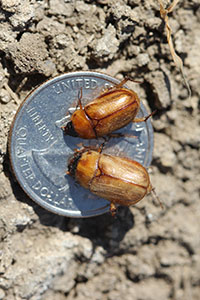
Figure 8: Adults of the southwestern masked chafer. |
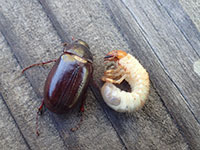
Figure 9: Adult and larva of a May/June beetle. |
Some kinds of turfgrasses may be less favored by white grubs. Although all the commonly grown cool season grasses used in lawns (Kentucky bluegrass, ryegrasses, fescues) are susceptible some warm season grass, such as bermudagrass, are less likely to be damaged by grubs.
Chemical Controls.
Presently there are several insecticides that can provide very good control of white grubs when applied at the proper time (Table 1). Since younger stages of grubs are much more effectively controlled than are large, older grubs, insecticides are best used in a ways that allow them to be in high concentration in the root zone at the same time eggs are hatching and young white grubs are present (Table 2).
The three insecticides most commonly used for white grub control (imidacloprid, chlorantraniliprole, chlothianidan) have long persistence and can kill grubs for a few months after application. These are best used in a preventive application, applied so that they will be present about the time when eggs are being laid and hatching. With all of the preventively-applied insecticides there will be a lag of a couple weeks between when the application is made to the soil surface and the insecticide moves into the root zone where the grubs are feeding.
Watering is important to insecticide performance. Some irrigation is needed to initially move the insecticide into the root zone. In the weeks immediately after application some watering may be needed to maintain good soil moisture so that the grubs will feed nearer the surface and be more exposed to the insecticide. When the upper soil dries white grubs will dig more deeply to find areas of adequate moisture.
The fourth insecticide available to control white grubs, trichlorfon, is used in a different manner. Trichlorfon does not have persistence after application, degrading very rapidly in soils. However, it can move rapidly into the soil and kill grubs shortly after application. Trichlorfon is best used as a rescue treatment after eggs have hatched and large numbers of grubs are actively feeding and damaging lawns.
Figure 10: Life cycle of May/June beetle white grubs. |
|
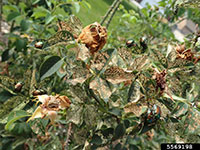
Figure 11: Japanese beetle adults feeding on rose leaves and flowers. |
|
Insecticides applied to lawn areas can be a hazard to pollinating insects if there are dandelions, clovers or flowering plants mixed with the turfgrasses in the treated area. To reduce this risk lawns should be mowed to remove all blooms before applying the insecticides.
Biological Controls.
White grubs can be killed by use of certain kinds of insect parasitic nematodes that are commercially available. Various described as “insect parasitic”, “insect predator” or “entomopathogenic” nematodes, these are tiny roundworms that develop within and kill susceptible insects (Fact Sheet 5.573, Insect Parasitic Nematodes). Several kinds of these nematodes are sold and those in the genus Heterorhabditis are effective for control of white grubs; Heterorhabditis bacteriophora is the primary nematode species used for white grub control. Nematodes in the genus Steinernema, such as Steinernema carpocapsae, are not effective for control of white grubs.
Insect parasitic nematodes are available from several mail order suppliers. They are designed to be mixed with water and drenched into the soil when grubs are present and feeding. Grubs that are successfully attacked by these organisms turn a reddish-brown color and die within a few days. The nematodes that develop within the grub will reproduce and newly produced nematodes may move into the soil and infect other grubs. However, numbers of the nematodes will normally greatly decline over time and will likely produce little, if any, observable effects on grub numbers in the year after application. Insect parasitic nematodes will also be unable to infect insects if soils are not warm enough (50oF minimum) for them to be active.
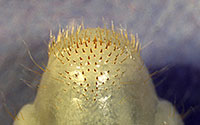
Figure 12a: Rastral pattern of a masked chafer grub. Photo by David Shetlar, The Ohio State University. |
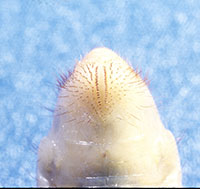
Figure 12b: Rastral pattern of a May/June beetle grub. Photo by David Shetlar, The Ohio State University. |
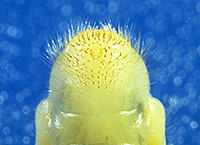
Figure 12c: Rastral pattern of a Japanese beetle grub. Photo by David Shetlar, The Ohio State University. |
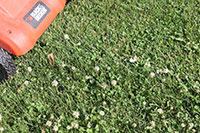
Figure 13: If flowering weeds are present lawns should be mowed before application of insecticides to reduce risks to pollinators. |
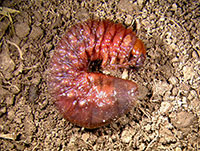
Figure 14: White grubs killed by Heterorhabditis nematodes turn a reddish brown color. Photo by David Shetlar, The Ohio State University. |

Figure 15: Life stages of a bluegrass billbug. From left to right: egg, five larval stages, pupa, adult. Photo by David Shetlar, The Ohio State University. |
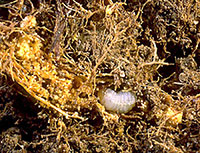
Figure 16: Billbug larva feeding within the base of a grass plant. Photo by David Shetlar, The Ohio State University. |
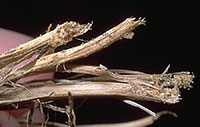
Figure 17: Grass plants damaged by billbugs will often break at the crown when pulled, exposing chewed areas of the stem. Photo by David Shetlar, The Ohio State University. |
A new (2018) product being marketed for grub control is the galleriae strain of the bacterium Bacillus thuringiensis (Btg), presently sold under the trade name grubGONE! Optimal application timing is around the time of peak egg hatch of the white grubs. For southwestern masked chafer and Japanese beetle this will occur sometime between mid-July to mid-August. Bacillus thuringiensis affects susceptible insects that consume the bacteria, which then paralyzes the midgut of the insect. Affected insects stop feeding very soon after infection, but it may take many days before insects are killed.
Another bacterium that has a different and much more limited use for grub control is milky spore. This is a bacterium (Paenibacillus popilliae) that produces “milky disease” in Japanese beetle grubs, which is indicated by the infected insects turning a milky color; it does not affect other species of grubs.
Milky spore will not produce any noticeable control of grubs in the year of application. Instead it is used as a one time application to try and establish this disease for long-term suppression of Japanese beetle grubs. Once milky disease is established at a site it can then reproduce and spread without further attention. In the eastern United States, where milky disease has long been present among Japanese beetle it will annually infect a small percentage of the grubs, typically in the range of 2-5% of the population.
Billbugs
Billbugs (Sphenophorus species) are weevils (“snout beetles”) that develop in grasses. Adult weevils are gray to nearly black, about 3/8-1/2 inch long and have a pronounced snout that is tipped with chewing mouthparts. The adults are most commonly observed as they cross sidewalks and driveways and they will characteristically “play dead” when disturbed, drawing in their legs and remaining motionless. Adults do chew on grasses but their feeding injuries cause minimal damage and is rarely noticeable. Females also cut small holes in the stems of plants where eggs are then inserted.
The young billbug “grubs” are the primary damaging stage. Billbug grubs are legless, generally white or cream, with a brown head. They may reach 1/3 to 1/2 inch long when full-grown. Young grubs feed within the crown area of the plant and kill it. The stems of infested plants are easily detached at the soil surface and the ends show evidence of ragged chewing. The larvae also produce a highly characteristic excrement around the base of the plants, which is generally similar to sawdust. Older billbug larvae feed in the lower crown and plant root zone in a manner similar to white grubs.
Billbug injury is most common on new lawns, particularly those established with sod. Billbug injury appears as wilting and occasional death of grass, often in small scattered patches. Extensive areas of a lawn may be killed during severe infestations.
At least two species of billbugs may be found in Colorado lawns. The bluegrass billbug (Sphenophorus parvulus) overwinters as an adult in protected areas, such as under debris near building foundations or at the interface of turf and sidewalk. Eggs are produced and laid in late May, June and early July. Larvae develop over the course of several months. Peak larval injury occurs in late June and July. When full-grown, the larvae pupate a few inches deep in the soil. The adults emerge in two to three weeks, feed briefly and seek overwintering shelter. There is one generation per year.
The Rocky Mountain billbug (Sphenophorus cicastristriatus), also known as the “Denver billbug”, is far more common throughout Colorado. The life cycle of this insect is more complicated than the bluegrass billbug. Some of the insects overwinter as adults, but most remain in the larval stage and feed throughout spring. Egg-laying occurs throughout most of the growing season, peaking in June and July.
Billbug Control
Cultural Controls.
Increased resistance in Kentucky bluegrass occurs with varieties that have fine stems and leaves and tougher plant tissues. Ryegrasses and fescues that contain endophytic fungi can have high levels of billbug resistance. Serious problems with billbugs should largely be avoidable where about a third of the plants or more in a lawn area have good billbug resistance features.
Cultivars that more aggressively spread can allow damaged areas of lawns to recover more quickly. Adequate fertilization and watering also will mask injury symptom and help lawns repair damage.
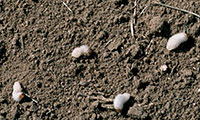
Figure 18: Late stage billbug larvae feed on the roots. Photo by David Shetlar, The Ohio State University. |
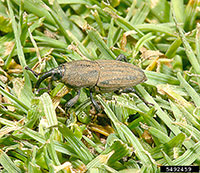
Figure 19: Adult of the bluegrass billbug. Photo by David Shetlar, The Ohio State University. |
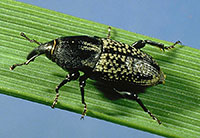
Figure 20: Adult of the Rocky Mountain billbug. Photo by David Shetlar, The Ohio State University. |
Chemical Controls.
Best control for the bluegrass billbug occurs when sprays are applied in early May to kill adult insects prior to egg laying; larval control can be difficult due to the habit of young larvae to tunnel within crowns of plants. Current information on the Rocky Mountain billbug indicates that a slightly later timing, in early to mid-June, is more appropriate for adult control. Apply adult sprays so insecticide residues remain as long as possible on foliage and in the crown area of the plant. Pyrethroid insecticides (bifenthrin, beta-cyhalothrin, cyhalothrin) are particularly good for persisting on turf surfaces. However, none of these will move into soil and cannot control larvae of either billbugs or white grubs. Insecticides recommended for billbug control are summarized in Table 1.
Controlling billbugs with insecticides is more difficult when they are in the larval (grub) stage. Young larvae are protected within the plant. Older larvae occur in the root zone where insecticides fail to penetrate. However, some of the more recently marketed insecticides, such as imidacloprid and chlorantraniprole, can provide good control of larvae and have some systemic activity within plants, allowing some control of crown feeding stages. Applications for larval control should be applied in late spring (bluegrass billbug) to early summer (Rocky Mountain billbug) to target early stage larvae.
Biological Controls.
A few kinds of insect parasitic nematodes (Steinernema carpocapsae, Heterorhabditis bacteriophora) are effective against both larvae and adult stages and may be used as a biological control. (See Fact Sheet 5.573, Insect Parasitic Nematodes.) The nematodes are available from many mail order suppliers and several nurseries.
| Table 1: Characteristics of insecticides used for control of billbugs and white grubs in lawns. | ||
| Common name | Trade names | Comments |
|---|---|---|
| chlorantraniliprole | Scott’s Grub-Ex, Acelepryn | A diamide insecticide that has shown excellent activity against white grubs, billbugs and caterpillars in turfgrass (webworms, cutworms). Very low hazard to humans, pets, and bees. Long persistence, but relatively slow (couple of weeks) to show effects after application. |
| imidacloprid | Hi-Yield Grub Free Zone II, Bayer Advanced Complete Insect Killer for Soil & Turf (with beta-cyfluthrin), Bayer Advanced Season-Long Grub Control, Bonide Grub Beater, Merit, Mallet, Zenith, others | A neonicotinoid insecticide with long persistence (weeks-months) that consistently has provided good-excellent control of white grubs. Somewhat slow activity (a couple weeks) and should be applied to younger stages. |
| clothianidin | Arena | A neonicotinoid with long persistence (weeks-months) that consistently has provided good-excellent control of white grubs. Also has some activity against webworms and cutworms. Presently only commercial formulation (Arena) available for turfgrass use. |
| trichlorfon | Bayer Advanced 24 Hour Grub Killer Plus Granules, Dylox | An organophosphate insecticide that is highly water soluble. The most fast acting of the white grub insecticides. Persistence is very short and it degrades extremely rapidly in high pH soil. Not useful for preventive applications due to very short persistence. |
| Bacillus thuringiensis var. galleriae | grubGONE! | Newly developed strain of Bacillus thuringiensis that specifically affects white grubs. |
| milky spore (Paenibacillus popilliae) | St. Gabriel Organics Milky Spore | Not a product that can be expected to provide any noticeable control for years. Only infects Japanese beetle, not other grubs. Milky spore will usually spread on its own over time once applied to a turfgrass site. Experience in areas where this organism has long been present indicates it provides modest effects, killing a small percentage (<5%) of the white grubs. Infected grubs turn a milky color. |
| cyhalothrin (gamma, lambda) | Triazicide Once and Done Insect Killer for Lawn and Landscape, Triazicide Insect Killer Granules, Scimitar | Pyrethroid insecticide that can be effective for control of surface feeding stages of turfgrass insects. Useful for control of adult billbugs. Will not control larvae of either billbugs or white grubs. |
| beta-cyfluthrin | Bayer Advanced Complete Insect Killer for Soil and Turf (with imidacloprid), Tempo | Pyrethroid insecticide that can be effective for control of surface feeding stages of turfgrass insects. Useful for control of adult billbugs. Will not control larvae of either billbugs or white grubs. |
| bifenthrin | Ortho Max Lawn and Garden Insect Killer, OnyxPro | Pyrethroid insecticide that can be effective for control of surface feeding stages of turfgrass insects. Useful for control of adult billbugs. Will not control larvae of either billbugs or white grubs. |
| Heterorhabditis species nematodes | HeteroMask, Grub-Away, BioStrike Hb,GrubStake Hb, Grub Stake Hi, others | A genus of insect parasitic nematodes that can directly penetrate through the insect body wall and is the only genus of nematodes that is effective against white grubs. Larvae are usually killed within one week of application. |
| Steinernema carpocapsae, Steinernema feltiae | Many trade names | The two most widely available species of insect parasitic nematode. Both can provide good control of billbug larvae. Neither can control white grubs. |
| Table 2: Optimal timing of insecticide applications for control of billbugs and white grubs. | ||
| Pest species | Target stage | Approximate time of occurrence |
|---|---|---|
| Southwestern masked chafer | young larvae | mid-July – early August |
| Japanese beetle | young larvae | July – early August |
| May/June beetles | young larvae | early-June through July |
| Rocky Mountain billbug | adults, young larvae | Adults: June; Larvae: late June-July |
| Bluegrass billbug | adults, young larvae | Adults: early-mid May; Larvae: late June-July |
*Colorado State University Extension entomologist and professor, bioagricultural sciences and pest management. 9/98. Revised 1/19.
Go to top of this page.





